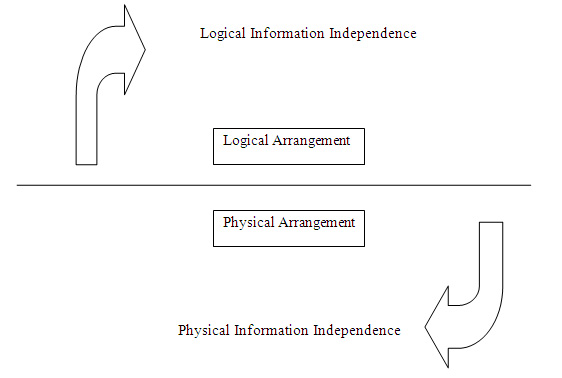Data Independence in DBMS, its Types and Advantages
Data Independence in DBMS, its Types and Advantages: One of the vast advantages of DBMS is the data independence. In this article, we will discuss what is data independence in DBMS, what are its different types and various advantages of using Data Independence in Database Management System.
Also See: What is Database Management System
Data Independence in DBMS
Definition: The acquired skill to change a conceptual pattern by not altering the conceptual pattern of the next superior level is defined as the data independence.
The conventional data processing does not provide data independence in application programs. So, any kind of changes in the information, layouts, or arrangements need the change in application programs also.
Fig 1: Conventional data processing without data independence
But in the database system the data independence becomes easy because of it’s multilayer feature and DBMS furnish interface in application programs and data to have data independency. Also DBMS manages separate files for managing data and for programs which utilizes information. Sometimes it becomes to retrieve data for other programs.
Fig 2: Database system with data independence
If alterations are done in the representation of information then metadata which is maintained by DBMS is only changed and the DBMS keeps on stipulating data to the application programs. Well, metadata has architecture of layers and in this if the information of one layer is changed then it does not alter the information in the next layer. Thus, data has the parameter of not only independence but also mapping to each other. So, the operation of data manipulation is handled by Database management system i.e. DBMS.
Advantages of Data independence
The advantages of data independency in DBMS are as follows:
- Ability of improving performance
- Alterations in data structure does not requires alterations in application programs
- Implementation details can be hidden from the users
- Reduction of incongruity
- Tractability in improvement of system
- Affordable prices of maintaining system
- Providing the best services to the users
- Permit users to focus on general structure
- Enforcement of standards
- Improvement of security
- The state of being undamaged or undivided can be improved
Types of Data independence
The data independency is classified as two types and they are as below:
- Logical Data Independence
- Physical Data Independence
The diagrammatic representation of the logical and physical data independence is as a shown below:
Fig 3: Types of data independence
Logical Data Independence
Logical data independence points out that the conceptual pattern can be altered by undamaging the current external patterns or schemas. The external level and conceptual level has mapping in between them and it takes all the made alterations. It also protects and isolates application programs from actions like combination of dual records into a single record or separating a single record into two or more records.
Logical data independence is a complex parameter to succeed when compared to the physical data independence because it needs pliancy in the scheme of database. For example, two users A and B select the same fields ‘student name’ and ‘student roll number’ then user A adds a new column to the field i.e. ‘student age’ then this does not affect the external view of user B but the internal patterns of both the users will be changed.
Physical Data Independence
Physical data independence points out the physical storing patterns changes by undamaging conceptual structures or arrangements. The presence of internal level in the architecture of database and the operation of changes from the conceptual level to internal level achieves the physical data independence.
Mapping between conceptual level and internal level provides a way to propagate from conceptual records to physical or stored records. If sophistication is made in the physical devices then likewise changes should be made in mapping of conceptual level and internal level which maintains conceptual level unchanged. To make conceptual schema as physically independent of data then external patterns defined on conceptual schema should be physical data independent
So it was all about Data Independence in DBMS, its Types and Advantages. If you want to ask any question then please comment below.




Hi, I found your post very useful among all searches.
Physical Data Independence in Database systems is provided by________ layer.
. Logical
b. View
c. Virtual
d. Physical
What are the disadvantages of data independence
Explain Data independence importance in DBMS: